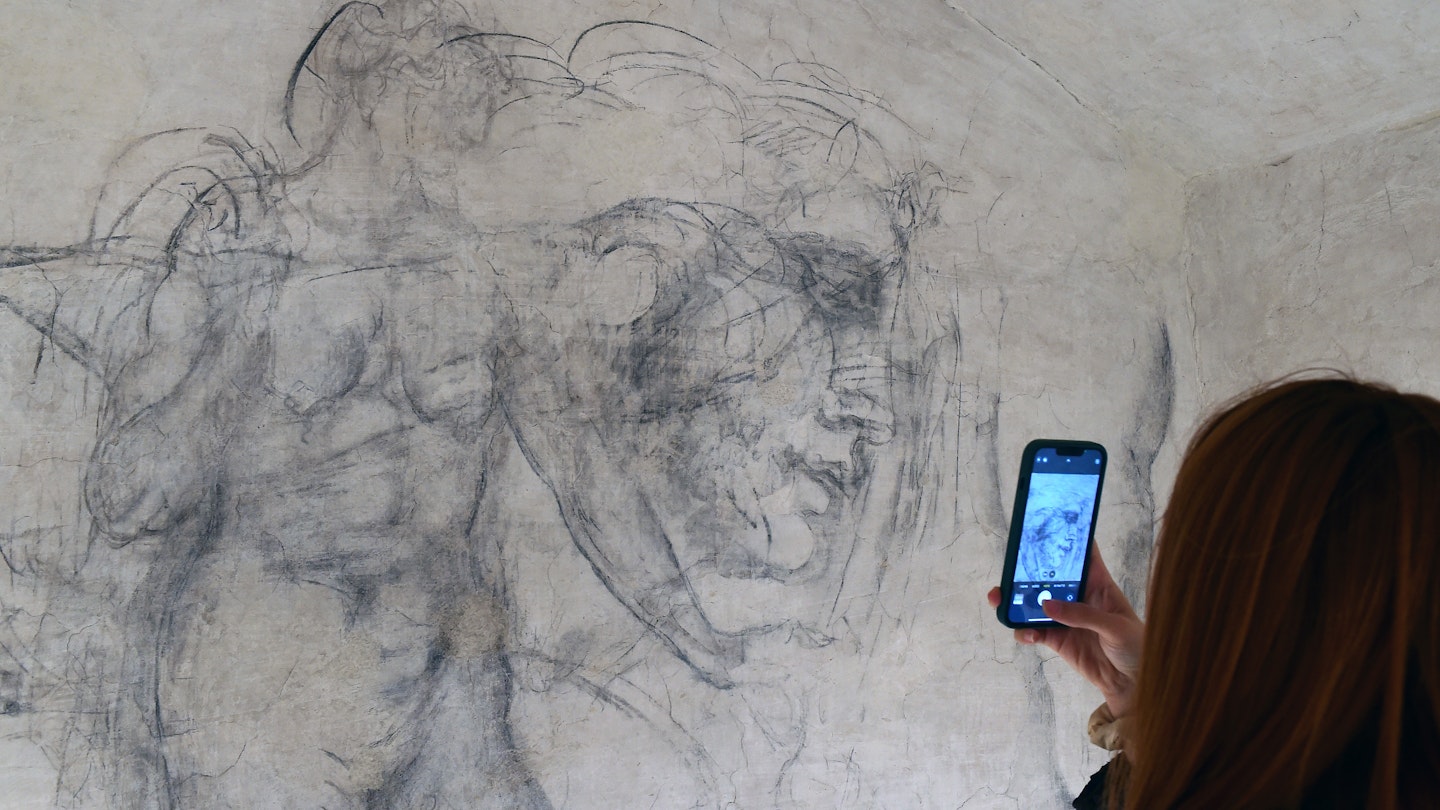
When exploring Italy, there consistently appears to be something new to discover. From the newly accessible Roman remains of the Acra Sacra di Largo Argentina to the recent reopening of Cinque Terre’s Via dell’Amore, and ongoing discoveries at Pompeii, the list of attractions continually evolves. Just when you believe you have experienced it all, new reasons emerge to revisit.
Among the latest attractions are two historic sites in Florence and Rome that have recently opened to the public.
In Florence, a newly unveiled secret—a “hidden” room believed to contain works by the esteemed Italian Renaissance artist, Michelangelo—awaits visitors. Discovered nearly 50 years ago beneath the Medici Chapels in San Lorenzo Basilica, this underground chamber is said to have served as Michelangelo’s refuge for two months in 1530. Allegedly, he adorned its walls with numerous sketches. On November 15, this space was finally made available to the public.

Fleeing from the challenges posed by Pope Clement VII, owing to his strained rapport with the ruling Medici family, Michelangelo is believed to have sought refuge here during the pope’s siege on Florence in 1530, as he was a member of the Medici family.
The hidden room was uncovered in 1975 by Paolo Dal Poggetto, a former director of the Medici Chapels. Initially, it was thought to be a mere storage area for coal, but upon discovering charcoal and chalk drawings on the walls, Dal Poggetto suspected there was more significance to the room. Following meticulous work over several weeks, the plaster was removed and revealed artwork that echoed Michelangelo’s famous masterpieces. Scholars speculate that these walls served as a canvas for conceptualizing ideas for future projects, as well as preserving sketches of his earlier works.
The drawings within the room, referencing creations such as the head of the Laocoön, the statue of David, and frescoes reminiscent of those in the Sistine Chapel, along with other sculptures and paintings, remain under analysis by art critics before definitive attribution to Michelangelo can be made. Nonetheless, it presents an impressive collection of Renaissance artwork.

“Entering that room leaves one utterly speechless,” stated Paola D’Agostino, the director of the Bargello Museums, which oversee the Medici Chapels, in an interview with the New York Times.
“As your eyes adjust to the room’s subdued lighting, you begin to perceive the myriad drawings and the various layers,” she elaborated.
This room had remained inaccessible to the public for several decades due to safety concerns regarding the confined space and access via a narrow flight of stairs. However, it is now open on a trial basis until the end of March next year. Visitors must arrange visits in advance, with access limited to 15 minutes per group. The cost is €20 per person, in addition to the €10 entry fee for the main museum and a €3 booking fee (€33 in total).

Meanwhile, in Rome, the Vatican has increased access to an ancient Roman burial site, providing visitors with a glimpse into a significant historic layer beneath the Vatican and Castel Sant’Angelo.
Known as the Via Triumphalis Necropolis, the “city of the dead” serves as a burial ground for a significant segment of Rome’s population during the first century BCE to the fourth century CE. The site contains over 200 individual graves and 40 sepulchral constructions, many of which are adorned with frescoes and stuccoes, serving as poignant tributes to the deceased.

The Vatican describes this site as exceptionally well-preserved, offering valuable insights into ancient Roman pagan funerary traditions. These methods were often rooted in superstition, the afterlife, and human affection and family unity, rather than formal religious associations. “In numerous instances, inscribed funerary stelae (monuments) have been unearthed, clarifying the identities of the deceased and their individual narratives,” noted the Vatican Museums.
Previously, access to the necropolis was restricted to approved groups of academics, students, and specialists. However, a gate overlooking Risorgimento Square has now been unlocked, permitting general public entry to the site.

This expansion coincides with the Vatican’s new exhibition, Life and Death in the Rome of the Caesars, which commenced on November 17. Visits to the necropolis are priced at €8.50 per person and are available on Fridays and Sundays.





